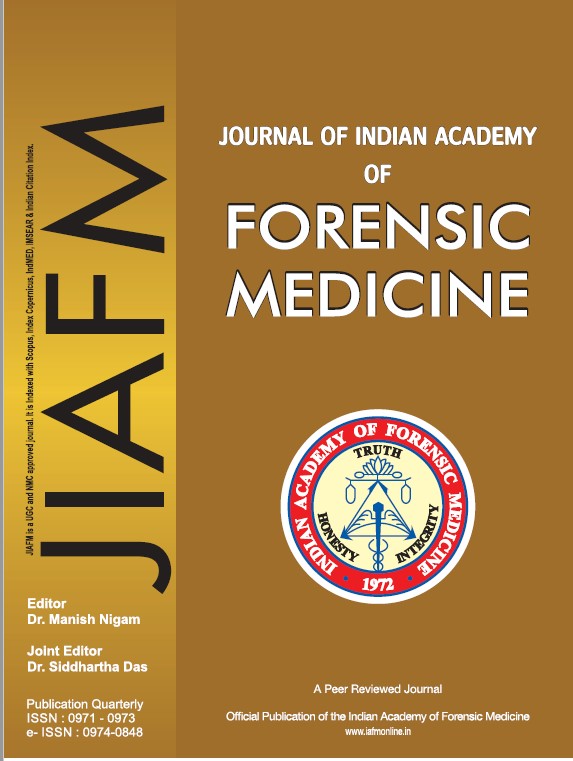An autopsy study of deaths due to hanging with emphasis on ligature material and periligature injuries
Keywords:
Antemortem hanging, Periligature injuries, Ligature materialAbstract
Hanging is that form of asphyxia, which is caused by the suspension of the body by a ligature, which encircles the neck, the constricting force being the weight of the body. Noose marks on the neck do not necessarily mean that an individual was alive when he was hanged. Hence, it becomes necessary for a forensic pathologist to differentiate between actual suicidal hanging and simulated hanging. Dried salivary stains due to dribbling of saliva from the angle of mouth and periligature injuries are two sure signs of antemortem hanging. Many researchers have conducted studies on ligature marks in hanging; however, very few studies have been undertaken on ligature material, periligature injuries, and the co-relation between them. Hence, this research work was carried to emphasize the importance of studying ligature material and periligature injuries, which are of vital importance in determining the antemortem nature of hanging. In the present prospective study, a total of 116 cases of deaths due to alleged hanging were studied. We observed that in most of the cases, the ligature mark was incomplete, above the level of the thyroid cartilage, and obliquely placed. Men most commonly used nylon rope to hang themselves, whereas women most commonly used odhani to commit suicide by hanging. Dried salivary stains indicating dribbling of saliva from the angle of mouth were observed in 11.2% cases. Periligature injuries were found in 10.34% in the form of abrasions with hemorrhages in 75% of cases and blisters in 25% cases. They were most commonly seen when hard ligature material was used.


